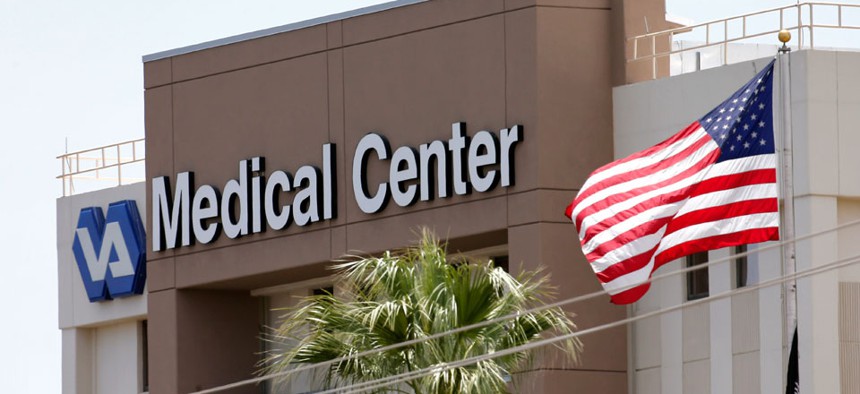VA CIO: Scheduling System Software Will Be Fielded by 2017, Not 2020

The Department of Veterans Affairs in Phoenix. Matt York/AP
The department says a chart depicting a full rollout not until 2020 was outdated and it's committed to a two-year rollout.
The Department of Veterans Affairs plans to field a new, commercial patient scheduling system by 2017, not 2020 as it said in contract documents released Sept. 17, and reported by Nextgov last week.
Stephen Warren, VA’s chief information officer, told Nextgov in an email a prominent, half-page chart in draft contracting documents for the agency’s medical appointment scheduling system did not accurately portray its goal to field the system two years after the award of the contract.
Warren noted in his email the documents were draft versions and that VA will “refine the language to be clearer that VA’s goal is to deploy the system in two years after contract award through a series of six month increments. The chart in the RFP [Request for Proposals] showing a delivery date of 2020 will be replaced with a more accurate representation of our goal.”
In a post on VA’s blog today, Warren also addressed the rollout. He wrote:
“One thing you may have heard was that the system rollout date would take longer than originally stated. We’re glad our draft release gave us a chance to catch this portrayal of our deployment plan so that we can correct it before the plan is released. VA’s goal remains to select a vendor who can meet our aggressive deployment timeline of 2 years after contract award, in six month increments or less.”
On Aug. 26, VA said it planned to issue an RFP for the scheduling system by the end of September. Now, however, VA says it will not do so until sometime in October with contract award in January 2015.
This pushes back the two-year fielding goal until 2017.
Warren said in his blog post VA pushed back release of the schedule-system RFP to October to assess feedback from industry.
“We have to get this right, so we are going to make sure we have the time to go through the feedback and incorporate it into the solicitation,” he wrote.
VA has been dealing with the fallout from a patient wait-list scandal since April, focused on delays at a number of its hospitals that forced veterans to wait months or years for an appointment.
The Phoenix VA hospital, where the scheduling problems first surfaced, did not install electronic wait list software until 2010, 10 years after its initial deployment to other VA hospitals.
VA started work on a replacement for scheduling software in 2001, but canceled the program in 2009 after spending $167 million and no usable product delivered.
VA Secretary Robert McDonald said in August the new scheduling system is necessary to provide veterans with “the timely, quality health care that they have earned and deserve."



